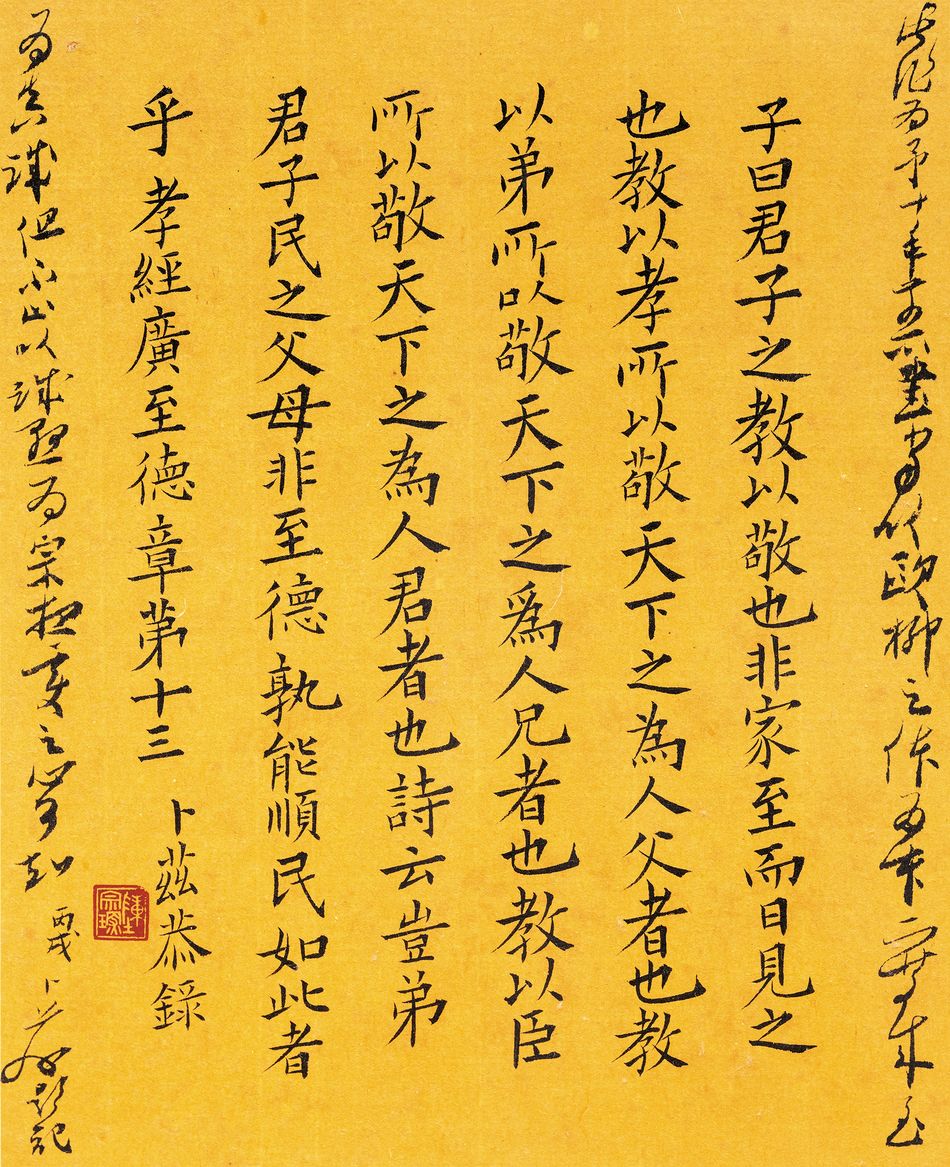

Lot 604
The Classic of Filial Piety in Regular Script
PU TZU (Bu Zi) (Taiwanese, 1959 - 2013)
1996; 2006
Ink on paper, framed
20 x 16 cm
Estimate
TWD 30,000-60,000
HKD 7,000-14,000
USD 900-1,800
CNY 7,000-13,000
Sold Price
TWD 72,000
HKD 18,848
USD 2,407
CNY 17,308
Signature
With one seal of the artist
PROVENANCE
Private collection, Taiwan
+ OVERVIEW
The Classic of Filial Piety consists of eighteen chapters, and this particular work by PU Tzu features the thirteenth chapter. Written in 1996, the entire text is rendered in Tang dynasty standard script, following the styles of Ouyang Xun and Liu Gongquan. The brushwork is refined, upright, and exudes an austere elegance. A decade after its completion, PU Tzu added annotations in small cursive script along the margins, documenting the creative intent behind the piece and expressing his desire for transformation. Although he faithfully followed the styles of Ouyang Xun and Liu Gongquan, he never took the ancients as his ultimate goal but instead maintained a persistent awareness of innovation.
From an early age, PU Tzu displayed a talent for calligraphy and diligently honed his skills. At twenty-five, he won an award for his standard script work in a calligraphy competition. His approach to calligraphy aligns with the philosophy of great masters who understood the principle: "No one who fails in standard script can excel in cursive script" and "Only by strictly adhering to rules can one truly transcend them." Thus, PU Tzu has always upheld rigorous discipline in his practice, maintaining a daily regimen of calligraphy. Deeply committed to self-cultivation, he regularly engages in meditation, scripture copying, and introspective study. His works, such as The Amitabha Sutra, The Diamond Sutra, and The Dao De Jing, exhibit the refined structure characteristic of Tang dynasty calligraphy. These pieces have garnered acclaim, standing alongside his wild cursive signature works.
This work represents not only a continuation of cultural tradition but also embodies two distinct temporal axes, akin to the growth rings of a tree. It traces PU Tzu’s artistic journey—not one that abruptly arrived at a deconstructive contemporary cursive style, but rather a gradual accumulation of rigorous training in both technique and knowledge. It is precisely this capacity for constant self-reflection that has allowed PU Tzu to continually soar amidst the rapid currents of an ever-changing era.
Refined Brushwork:Ink Paintings & Works of Art
Ravenel Spring Auction 2025 Taipei
Saturday, May 31, 2025, 3:00pm
